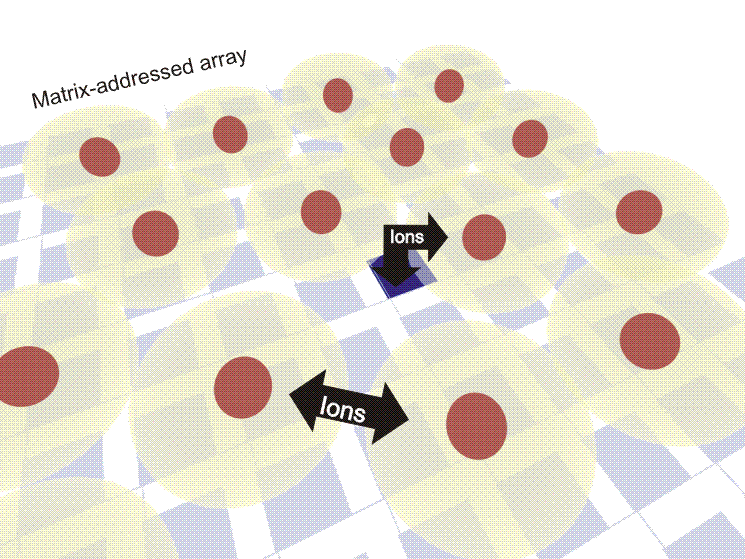487e Micro- Electrochemical and Electrophoretic Delivery of Charged Species from Conducting Polymer Surfaces
Organic electronic materials offer the unique characteristics in that they are electroactive, yet also biocompatible. Many conjugated polymers are electrochemically active, allowing electronically-controlled transport and release of ionic species. We have designed a system to transport small cations from one liquid electrolyte through a polymeric material to specific points on a surface covered by another electrolyte (cell media) in a temporally and spatially-controlled manner. Since the materials used are fully bio-compatible (based both on toxicity and cell-adhesion tests), cells can grow directly on the switching surface and ions can be delivered directly to individual cells or clusters of cells. Only individual devices have been demonstrated to date. However, building systems of designs in a relatively simple matrix-addressed array is technologically feasible. We have demonstrated that the device works by depolarizing the membrane of neural cells with K+ in a cell media with extra Ca2+ and watching the intracellular Ca2+ response using a fluorofor, but one of the first goals for the project is to study the effects of intra- and extra-cellular Ca2+ oscillations on cell behavior and gene expression, particularly in tissues of epithelial cells.

Web Page: www.orgel.itn.liu.se